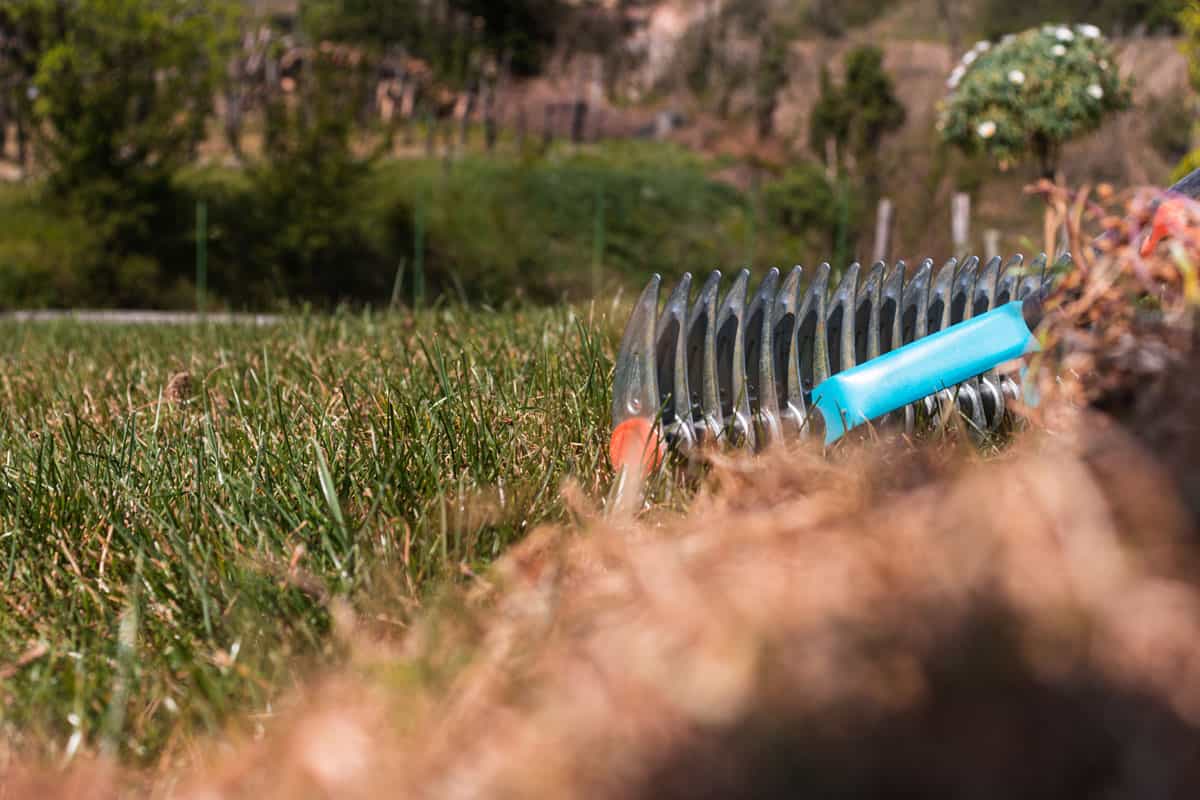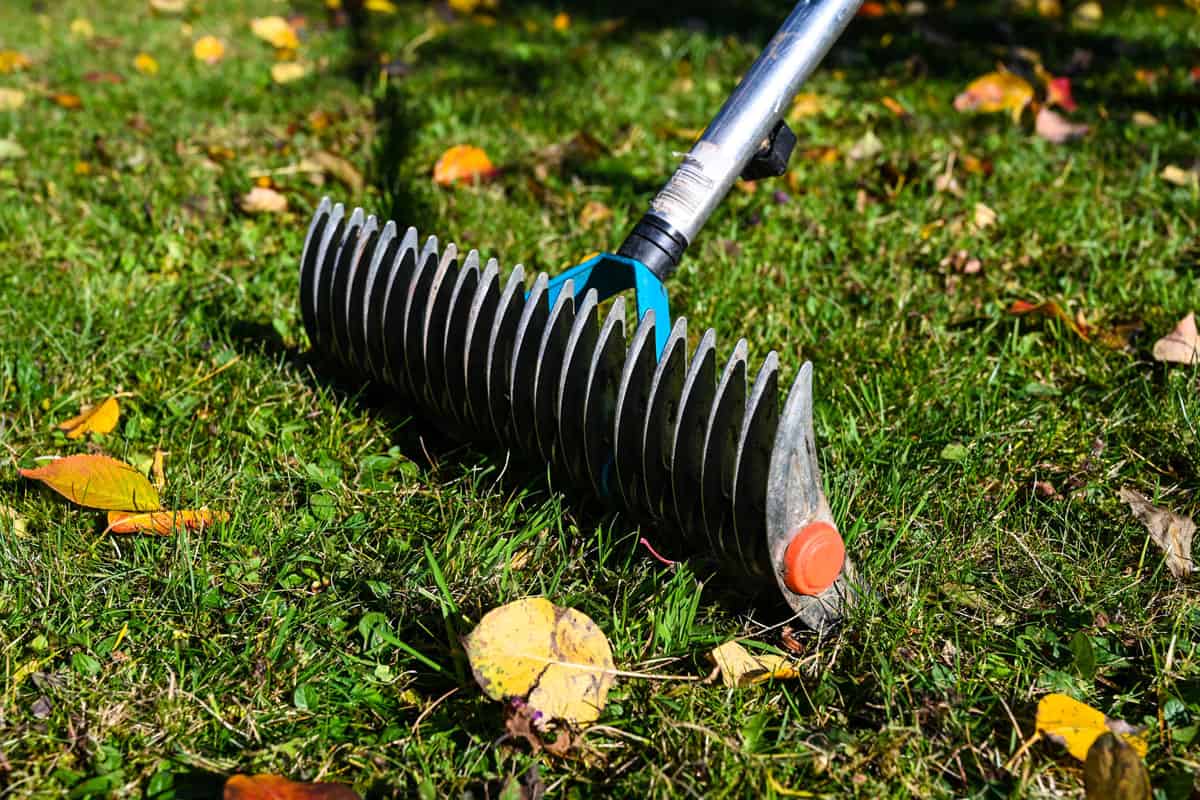Thatching rakes can be used for the upkeep of your lawn. You might have brought a thatching rake and are now wondering how to use it for your property. Don't worry because we have done the research to provide you with everything you need to know when using a Craftsman thatching rake.
Below is a step-by-step guide you can follow when using a Craftsman thatching rake.
- Adjust the tilt of the rake blades to your desired angle.
- Press the preferred side of the rake on the top of the area you will work on.
- Repeatedly pull and push the blades against the grass.
- Remove thatch pile.
- Repeat the same process throughout the entire area until completed.
A Craftsman thatching rake has a thatching blade and a cultivating blade. Each blade has a different purpose and will yield different results. Continue reading as we discuss all the other essential information you will need when using a Craftsman thatching rake.
How Do I Use A Craftsman Thatching Rake On My Lawn?
Craftsman thatching rake is a bladed rake that can be used to remove unwanted growth of moss or dried grass off your lawn. They are designed to pull out the loose material without completely damaging the grass growing below the accumulated thatch.
A Craftsman thatching rake head has two types of blades on each side. One rake has a curved but smooth tine blade. This blade is designed to remove the thatch that is sitting above the grass.
The other blade available on a Craftsman thatching rake is curved with a little bend on the tine. This rake blade is designed for cultivating the soil. You can use this side of the rake for preparing the soil before seeding.
You can use a Craftsman thatching rake just as you would with any garden rake. However, a Craftsman thatching blade has added features that a normal garden rake does not have. Below is a " target="_blank" rel="noopener" data-lasso-id="30742">guide you can refer to when using a Craftsman thatching rake.
1. Adjust The Tilt
![lawn thatcher garden yellow leaves on garden, How To Use A Craftsman Thatching Rake [Step By Step Guide]](https://gardentabs.com/wp-content/uploads/2023/01/How-To-Use-A-Craftsman-Thatching-Rake-Step-By-Step-Guiderev.png)
A Craftsman thatching rake has a curved tine blade located on both sides of the object's head. By default, the tine blades are positioned horizontally the way some garden rake tines are angled. When used at this angle, the tine blades can dig deeper into the turfgrass.
The angle of each Craftsman thatching rake blade can be adjusted to the preference of the user. To adjust, locate the two wing nuts installed on each side of the rake brackets that hold the blades.
Once located, loosen both nuts until the rake head can easily tilt from one side to the other. From here, simply adjust the angle of the rake blade to your preference.
When the angle of the rake blades is 90 degrees, the blade will easily strike the soil. This tine blade angle provides extra reach for the rake. A straight tine blade angle will be able to fork out thatch and other debris that might be sitting near the soil.
If the tine blades are angled towards the handle, it will result in the curvature of the blade being exposed to the soil rather than the pointed ends. As a result, a more angled blade will sweep the thatch on the grass, rather than scrape the thatch from underneath.
Once you have set the tilt of the tine blades to your preferred angle, tighten both wing nuts. Make sure that both nuts are tightened well. If one wing nut is looser than the other, the rake blades will become unstable during use.
2. Press The Rake Head To The Ground
Since thatching using a rake will require intensive manual labor, prepare to assign parts of your lawn in groups. You can do this by organizing your property by squares, or by areas that are separate from one another.
Dividing your lawn will allow you to focus on one small area rather than the whole property as a whole. Once you have divided the parts of the lawn, you can begin to rake through each section.
Press the head of the rake at the top of the imaginary section o your lawn. This will allow you a full scrape through the whole section when you begin raking.
3. Repeat Pushing And Pulling Against The Grass

Just as we mentioned before, you can use a thatching rake just as you would with any garden rake. However, there are slight changes to the method of use due to the heavier and sharper rake head.
Because thatching rakes are made of steel, it will require more effort from the user to rake through the grass. However, you should refrain from pulling and pushing the rake too much or the blade might pull growing grass along with the thatch.
Begin raking the grass just as you would with a normal garden rake, be aware to always keep the tine blades in contact with the grass. This allows the rake to get rid of the thatch that might have been caught in between the tine blades when you push the rake head back to the start of the section.
4. Remove Thatch Pile
After repeatedly raking the grass, a bundle of thatch should pile up at the bottom of the section of your lawn. Dispose of the material immediately. This will allow you to proceed to the next section without dealing with the pile of thatch spreading pieces of debris all over the property.
You can throw thatch together with other disposable materials from your garden. You can also choose to include thatch in your compost. Composting thatch can turn it into organic matter that you can use in your garden in the future.
5. Repeat The Process Until Complete
Continue the process of dethatching each section of your lawn until you've covered everything. Make sure to repeat dethatching only when it is needed. Avoid dethatching your lawn too often.
Should I Wet The Lawn Before Dethatching?

You should not wet the lawn before detaching it. Watering the lawn before dethatching can cause damage to the turfgrass.
Most detaching devices utilize blades in order to reach thatch that might be stuck in between growing grass. If you wet the lawn before dethatching, the soil will become soft and easily sowed. This will result in the blades easily pulling out the growing grass along with the thatch.
When dethatching a lawn, make sure to do it when the soil is moist, not wet. This is in addition to only dethatching the lawn when it is needed, and not on a regular basis.
How Do I Know When My Lawn Needs Dethatching?

Thatch is a material made up of dead stems or roots. Thatch accumulates naturally on the ground and it will be present on growing turfgrass. Completely ridding all turfgrass will reduce the resilience of your lawn against foot traffic.
Since thatch is natural, it is best to dethatch your lawn only when there is an excess accumulation of the material on your lawn.
Generally, thatch is considered excessive if it piles up from 1/2 an inch to 3/4 of an inch above the soil. However, if you have noticed that thatch is affecting the growth of your grass, then consider dethatching your lawn.
Excess thatch can significantly reduce the amount of air and water that can reach the soil. When thatch is left to gather on the ground, the roots of the grass will attempt to take root on the thatch in order to receive sufficient air and water to survive.
This affects the growth of your grass because thatch is not a great material for grass to grow on. Thatch can either be too hard to moisten or too absorbent to drain. This can result in drying up the grass or saturating the roots in so much water that it accumulates bacteria and develops diseases.
Should I Dethatch Before Or After Mowing?
Dethatch your lawn after mowing the grass to half its original length. This will open up the grass and give the tine blades easier access to the thatch. Mowing before dethatching will also reduce the amount of debris you will end up with after the task.
To Wrap Up

Craftsman thatching rakes have specialized blades designed to scrape the thatch on your grass. They can be used as a normal rake, with one side used to dethatch and the other used to cultivate the soil.
In this article, we discussed how you can use a Craftsman thatching rake on your lawn. We also discussed the proper preparations before dethatching a lawn. Make sure to follow the guide so you can properly use a thatching rake.
Made it to the end? Check out some of our other related posts!
Lawn Sweeper Vs Dethatcher Vs Bagger – Which Is Right For You
